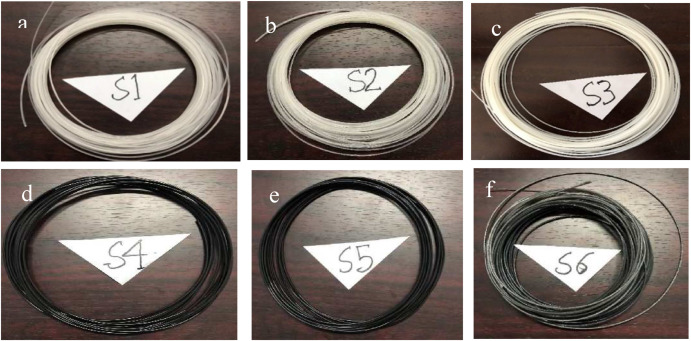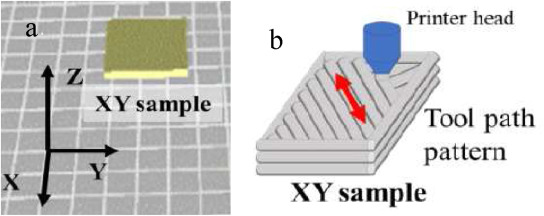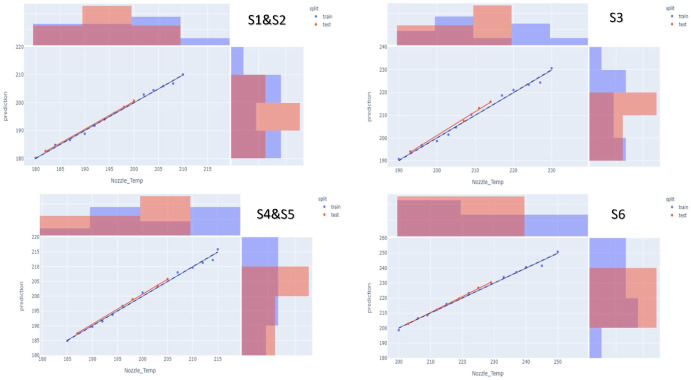Researchers from the Dhaka University of Engineering and Technology have developed and analyzed 3D printed nanoparticle-infused plastic materials using machine learning techniques.
Designed for the FFF 3D printing process, the six new filaments are made up of a combination of recycled plastics and nanoparticles, with a graphene coating used in two of the materials.
During the study, the team evaluated and compared the materials’ properties, including microstructure, surface texture, mechanical behavior and thermal characteristics. With the help of machine learning, the researchers were able to correlate the printing parameters for given 3D printed products in order to achieve more reliable and enhanced mechanical and physical qualities.

Process parameters for FFF
In line with the ever-increasing demand for more complex and multi-functional 3D printed products, new materials are being continually explored for their suitability for additive manufacturing.
In the study, the researchers focused on the FFF process, where factors such as the dynamic equilibrium of the melt and extrudate pressure and the polymer rheology associated with temperature are critical to achieving optimal 3D printed parts. The dimensional accuracy, surface finish, and mechanical performance of FFF-printed parts are significantly impacted by the performance and quality of the filament being used, as well as the bonding between adjoining filaments.
To optimize FFF-printed parts, therefore, the scientists say it is vital to understand how various process parameter settings affect the parts’ mechanical properties, the most crucial of which are tensile, compression, flexural or impact strengths, and print orientation.

Devising new 3D printing filaments with machine learning
The main aim of the study was to explore how to seek more reliable and enriched robust mechanical and physical properties of 3D printed parts compared to commercially available products. The researchers expect the study’s findings and applications to contribute to developing various industry-related processes.
The research team developed six new filaments containing PLA, HDPE, recycled filament material, and titanium oxide (TiO2) nanoparticles to produce 3D printed parts using a commercially available FFF 3D printer and filament extruder.
For two of the filaments, graphene was used to create a hydrophobic coating so that alteration of the original mechanical properties of the end-parts could be minimized, and only the surface of the part would be treated.
For each material, the nozzle temperature was predicted using machine learning suggestions, while print bed temperature and print speed were also determined by the team’s machine learning programs. The researchers stated the quality of FFF-printed products is directly dependent on the flowability of the materials used, which is ensured by accurate nozzle temperatures.

The researchers used machine learning programs via the python platform, which employed a linear regression algorithm to build up the relative data points. A Train/Test function was also applied to measure the suitability of the machine learning model, which divided the data into a training set and test set. This function enabled the team to visualize how well the model was generalized by comparing it with the “theoretical optimal fit”.
The model was declared valid as the testing data fit with the training data set, meaning the predicted nozzle temperature was good enough to print the samples. Nozzle temperature was highest for the materials comprised of nanoparticle and recycled-based plastics, as was suggested by the machine learning program, while the print speed as at the minimum range when the bed temperature of the printer was at the maximum level.
Once printed, the materials then underwent tensile strength, elongation, hardness and thermal gravimetric analysis (TGA) tests, among several others, to evaluate the optimized properties of the printed samples.

Ultimately, the researchers aimed to deploy machine learning algorithms as a means of achieving more dependable and enhanced mechanical and physical characteristics in FFF-printed parts compared to traditional 3D printed parts. Going forwards, the researchers see the results of the study paving the way for various improvements to industry-related additive manufacturing processes.
Further information in the study can be found in the paper titled: “Development and analysis of nanoparticle infused plastic products manufactured by machine learning guided 3D printer,” published in the Polymer Testing journal. The study was co-authored by M. Hossain, M. Chowdhury, M. Zahid, C. Sakib-Uz-Zaman, M. Rahaman, and M. Kowser.

Machine learning in 3D printing
The predictive power of machine learning is being leveraged more and more in many aspects of 3D printing to improve processes and materials development.
Machine learning techniques have been previously leveraged by Argonne National Laboratory and Texas A&M University to more effectively detect defects in 3D printed parts, and by New York University’s Tandon School of Engineering to reverse engineer glass and carbon fiber 3D printed components.
Regarding materials development, the Swinburne University of Technology has used machine learning tools to improve upon the properties of 3D printed construction materials, and University of Cambridge spin-out Intellegens has developed a new machine learning algorithm for designing new materials for additive manufacturing.
Most recently, researchers from Lehigh University proposed a novel machine-learning approach to classifying groups of materials together based on their structural similarities.
Subscribe to the 3D Printing Industry newsletter for the latest news in additive manufacturing. You can also stay connected by following us on Twitter and liking us on Facebook.
Looking for a career in additive manufacturing? Visit 3D Printing Jobs for a selection of roles in the industry.
Subscribe to our YouTube channel for the latest 3D printing video shorts, reviews and webinar replays.
Featured image shows ML process optimization model validation for 3D printer. Image via Polymer Testing.



